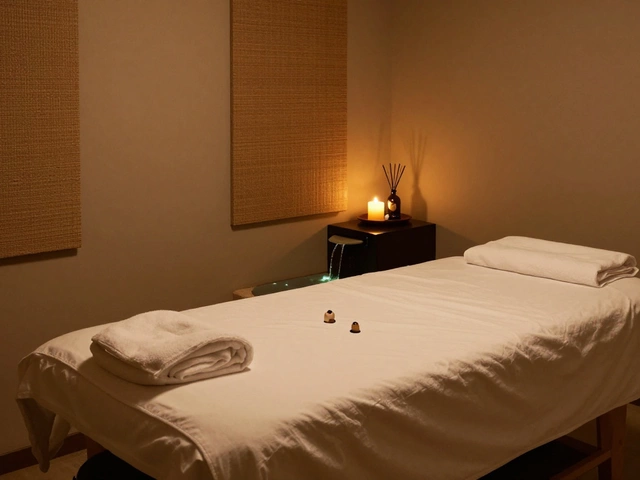Comfort: How Ease Drives Performance, Recovery and Everyday Joy
When talking about Comfort, a state of physical ease and mental relaxation that helps athletes and travelers feel better and perform higher. Also known as ease, it’s the foundation for staying sharp on the court, enjoying a holiday stay, or simply getting through a busy day without aches.
One of the biggest drivers of comfort is Ergonomics, the science of designing tools, spaces and movements to fit the human body. When a tennis racket feels balanced in your hand, or a basketball shoe cushions every jump, ergonomics is at work. Ergonomics enhances comfort, reduces strain, and boosts overall performance. Think of the difference between a hard plastic chair and a well‑lined seat; the latter lets you focus on the game instead of your back.
Another key piece of the puzzle is Recovery, the process of restoring muscles, joints and mind after intense activity. Recovery influences comfort by repairing micro‑tears, easing inflammation and resetting energy levels. Simple steps like icing a sore elbow after a match, using compression sleeves, or getting quality sleep all feed into better comfort on the court and on the road. When recovery works, you feel less pain and can push harder next time.
Performance, the measurable output of skill, speed and endurance in sports or daily tasks is tightly linked to comfort. If you’re uncomfortable, your focus slips, your swing loses precision, and your stamina drops. Comfort enables performance by freeing mental bandwidth and keeping the body in optimal alignment. Players who sit in a comfortable locker room, wear well‑fitted gear, and follow smart recovery routines tend to rack up better stats and enjoy longer careers.
Comfort Across the Topics You’ll Find Below
In tennis, comfort means a grip that won’t slip on a sweaty hand and a racket that feels like an extension of your arm. That same idea appears in basketball, where cushioned shoes and breathable jerseys lower fatigue and let athletes chase every rebound. Our articles on elbow tendinitis, AAU basketball, and why players keep fighting in a lost set all tie back to how comfort drives persistence and results.
Travel and hospitality also revolve around comfort. The news about Parkdean Resorts securing £250 million for expansion shows how investors bet on better rooms, smoother check‑ins and upgraded amenities to keep guests relaxed. When a holiday park feels spacious, clean and well‑designed, visitors experience less stress and more enjoyment, which in turn fuels repeat visits and positive reviews.
Even topics that seem unrelated at first—like a historic legal case or a video‑game release—can be linked by the comfort factor. A player’s immersion improves when the game runs smoothly on a comfortable console, and readers feel at ease when complex news is broken down into clear, human language.
Below you’ll discover a curated mix of stories, guides and insights that all touch on comfort in one way or another. Whether you’re looking for tips to protect your elbow, want to understand how ergonomic gear can up your game, or are curious about the latest moves in the travel industry, the posts ahead give you practical takeaways and real‑world examples.
So keep reading to see how comfort shapes performance, recovery, and everyday satisfaction across sports, travel and beyond. Each article adds a piece to the puzzle, helping you build a more comfortable, effective and enjoyable life.
Do pantyhose feel good in tennis shoes?
Pantyhose can be worn in tennis shoes, although many people find them uncomfortable. They can provide warmth, support and a snug fit, but they can also cause discomfort due to the tightness of the material. It is important to choose the right size and material to ensure comfort. Synthetic materials are usually best, as they offer flexibility and breathability. For added comfort, a thin, breathable sock can be worn underneath the pantyhose. Ultimately, comfort is subjective and it is up to the individual to decide if pantyhose are a comfortable choice for their shoes.



